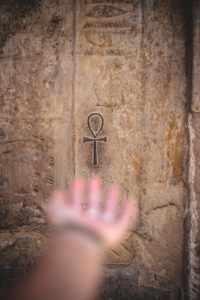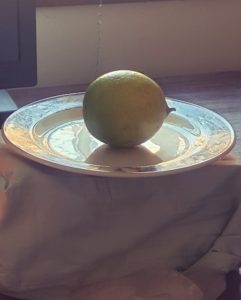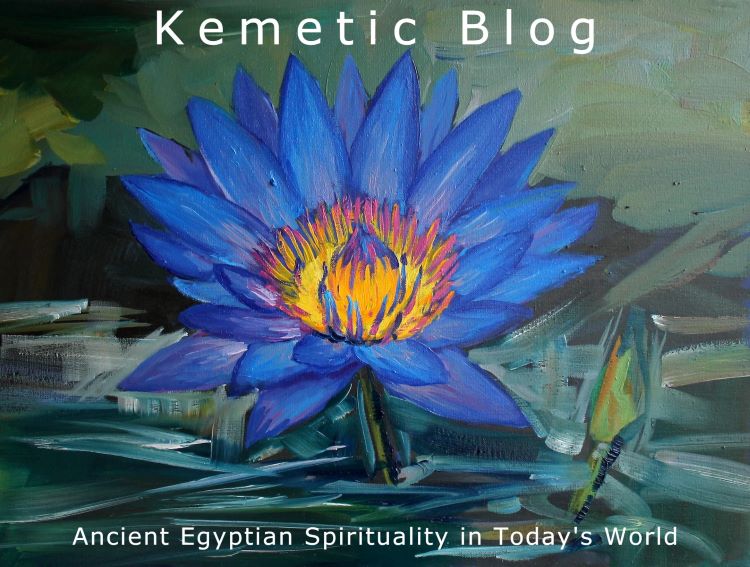
Photo by rosario janza on Unsplash
Introduction to Kemetic Spirituality
If you’re brand spanking new to Kemetic spirituality, or to put it more simply, Egyptian neo-paganism, you’re bound to have lots of questions about how it all works and what you can do to get started. No need to feel overwhelmed! The good news is, it’s a lot easier to get started on this path than you might think.
In this four-part series of posts, I will give you my own spin on Kemetic spirituality for beginners. Plus, I’ll share some easy tips on how you can get started with just a few simple items you probably already have in your house. First a disclaimer: because I am so passionate about Kemetic spirituality, I tend to be a bit long-winded when writing about it, so grab a cuppa (that’s Aussie slang for a hot beverage of your choice) and enjoy!
Before we delve any deeper, it’s important to acknowledge the wide range of diversity that exists among Kemetic practitioners. You might compare it to Christianity, with its many denominations. We have independent, solitary practitioners and others who worship in groups. Some are Afro-centric and are focused on Kemeticism as an African-based religion, while others follow Wicca and incorporate ancient Egyptian deities into Wiccan practice. Some people practice Kemeticism in absolute or reconstructionist terms, meaning they will only accept practices that are as closely reconstructed as possible to the real thing. Then, we have reformed practitioners who approach Kemetic spirituality in a relaxed and practical manner and have adapted it to modern life. This is the category I fall into.
What is presented in Kemetic Blog comes from an independent and intuitive perspective. From my own point-of-view, the real thing comes from having a real relationship with the deities you are working with. I’ve also learned how to place equal value on subjective and objective knowledge in my approach to Kemetic practice. If you read on, I’ll show you how you can do the same.
The reason I’m so passionate about sharing my own perspectives on Kemetic spirituality is because I like seeing strong, confident practitioners who can think for themselves. This includes practitioners who are well-grounded with a historically informed knowledge-base, yet possess practicality in both their skill and approach to Kemeticism.
Active psychic awareness is also important to cultivate, because it means you can interact with deities in non-physical reality. Think of it this way: if you had the opportunity to meet your favourite pop star, would you agonise over 150 volumes of biographies about that pop star and argue over who’s right and who’s wrong, or would you read a few perhaps, then meet the pop star and ask them yourself? When your psychic awareness is activated, you can ask the deities themselves and receive direct guidance from them. The challenge then is to trust what you know in everyday reality.
Hearing the values and core beliefs of others concerning Kemetic spirituality should help you to decide on your own values, when you are ready. This includes what works for you and what doesn’t — including the information in this blog! If you choose to do so, let’s continue.

My very first food offering to the Kemetic deities. Notice how simple it was!
Okay, let’s break it down with a list of five things you’ll need to get started.
Barebones Starter Pack:
- A clean surface
- A candle
- Salt
- A suitable offering, such as a fresh piece of fruit or slice of whole grain bread.
- Uninterrupted, quiet time
One important point the ancient Egyptian deities, or netjeru often place an emphasis on whenever I write about them is, if you feel a connection to the Kemetic pantheon or family of gods, it’s usually because they are already with you, and working with you in your daily life. Perhaps you’ve noticed them around? What strikes me about the netjeru is their incredible degree of accessibility. Don’t take my word for it. Discover them for yourself!
Below are a few suggestions I have for newbies on how to get started in Kemetic Spirituality. First off, as mentioned in our barebones guide, you’ll want to claim some time for yourself that is quiet and free of distractions. Once you have your you-time, or more accurately, netjeru-time you are ready to begin.
Create and utilise sacred space
Start clearing the way with some sea salt, or you could try pink Himalayan salt, if you’re worried about environmental pollutants. Some practitioners use ordinary table salt. Whatever salt you use, it will help purify your space and prevent any negativity from loitering around in your physical and energetic environment.
It’s a good idea to establish boundaries from the start. The ancient Egyptian deities will always present as positive energy, so no amount of salt or boundary-setting will deter them. In fact, you’re making the netjeru’s job easier, by helping them to establish a clear connection with you. Just like when all the bars light up on your phone, you know the connection you have is strongest. This is what we want to achieve with the netjeru.
One method of dispersing the salt is to mix it with water and asperge or scatter it around your environment. This way is perhaps the most popular in Kemetic spirituality. Other methods of dispersion include sprinkling a circle of salt around yourself, sprinkling it along windows and doorways, or simply scattering it around. Personally, I find that having one or more small bowls filled with 2-3 tablespoons of salt works just fine. I also have Himalayan salt crystal lamps in my house, which will be the topic of an upcoming post (but you can probably guess why I keep them around).
The ancient Egyptians themselves used a naturally occurring combination of salt and sodium bicarbonate called natron, which to my knowledge, is no longer available for export out of Egypt. It’s quite easy, however, to make your own. Combine equal parts of salt and baking soda, add enough filtered water to make a paste, spread into a pyrex dish and bake until dry. Now you’ve got your natron. Pound the natron back into a powder using a mortar and pestle and it’s ready to use for ritual purposes. I will also do a future post on making natron (the pics are ready to go!) but that’s natron in a nutshell.
Other ways of creating sacred space include using sound. A sistrum is an ancient Egyptian ritual instrument used to dispel negativity and sounds a bit like a tambourine. As you become more advanced in your practice, consider investing in a sistrum. Until then, a simple bell, singing bowl or tingsha which are more widely available, will suffice. In a pinch, you could try a wind chime, which may sound silly but despite common misconceptions, pagans are very practical people. I’ve used pillowslips for table cloths, a sewing box for an altar and dental floss for thread. At the end of the day, the sound of a wind chime will break up negative energy fields and get positive energy flowing. This is why we use wind chimes in feng shui.
Another way of creating sacred space is burning incense or smudging herbs, including sage. While smudging is a custom borrowed from Native American traditions, a little interfaith work never hurt. For purists however, you can either learn to make or source an incense called kyphie. Making your own incense can be fun, though it’s an expensive exercise that requires skill to properly craft and is best left until you’re truly ready. Kyphie is used as more of an offering to the gods as opposed to a smudging incense, but it would certainly clear away negativity.
You can always ask the netjeru to assist you in clearing sacred space but it is important to make the effort yourself first. There’s also a symbolic element to clearing space, because it means you’re clearing a space in your life for the divine.
Depending on how formal you want your approach to be, you may also wish to purify yourself before presenting to the netjeru. Ritual purity was something the ancient Egyptians themselves practiced rather rigorously, and this tradition is widely observed in Kemetic spirituality today. You can achieve ritual purity by rinsing your hands with cool, running water while stating your intent. You may also want to take a ritual bath before hand. I also scan my body for any negative attachments and if there are any, I visualise the water washing these away. Once you and your space are clear, you are ready to meet with the netjeru.
Thank you, for reading Kemetic Blog and an introduction to Kemetic spirituality for beginners. Watch for upcoming posts in this series, which I will paste links to in the comment section below. Take care!
𓆸
© Scott Rose / Kemetic Blog – All Rights Reserved.

3 Comments
kemeticblog_qpxrjd
October 3, 2020 at 11:33 amHey, guys! Here’s that post on natron I promised, along with its use in ritual purification:
https://www.kemeticblog.com/how-to-make-and-use-natron-to-achieve-ritual-purity/
Scott Rose
November 17, 2020 at 6:32 pmHere’s part 2: https://www.kemeticblog.com/kemetic-spirituality-for-beginners-how-to-get-started-in-egyptian-neo-paganism-part-2-of-4/
Steven Hassan Kamau
November 26, 2021 at 11:29 pmI am king, I am the promised lion, I love you, You are my “baptizer” let it be done.